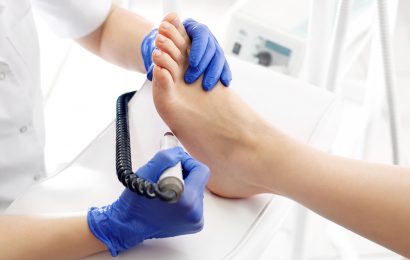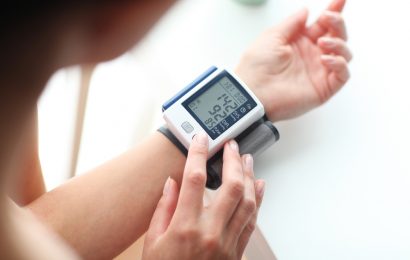Diabetes can cause a host of medical complications, some well-known and others less so. Bladder and voiding (bladder emptying) problems are quite common in people with diabetes, both in those who have had trouble maintaining good blood glucose control and in those who have been able to keep a tight rein on their levels.
The bad news is that bladder problems, like so many complications of diabetes, are at first “silent” ones — they can go unsuspected for months or even years before suddenly manifesting themselves. The good news is that by looking out for certain warning signs, you can catch bladder problems early and treat them before permanent injury is done.
Why bladder problems?
The reason people with diabetes develop bladder problems is complex and involves the bladder muscles and the nerves that control them. The picture is further complicated by the fact that people with diabetes can develop all of the same bladder and voiding problems as people who don’t have diabetes. For instance, women with diabetes can develop the same overactive bladder problems (including feeling sudden urges to void and needing to void more frequently) that women without diabetes often have. Likewise, men with and without diabetes tend to develop enlarged prostates as they get older, causing both obstruction of the flow of urine and irritability of the bladder (a condition that has symptoms similar to overactive bladder, but different treatments). A stroke or a herniated disk compressing a spinal nerve, among other non-diabetes-related conditions, can also cause bladder problems. Sometimes a person with diabetes may have bladder and voiding problems with multiple causes, only one of which is diabetes.
Seeing a physician who is familiar with the many possible causes of bladder dysfunction is essential in helping to identify what’s causing the problem and to determine the appropriate therapy. One type of bladder dysfunction that’s important for people with diabetes to be aware of is the classic diabetic neurogenic bladder, or “diabetic bladder.”
“Diabetic bladder” symptoms
People with a diabetic bladder can have a variety of symptoms: Common ones include frequent urination, incontinence, difficulty starting a urinary stream, urinary tract infections, and sensations of needing to urinate urgently. The underlying problem is that neuropathy (nerve damage) causes the bladder to lose the ability to sense when it is full, just as neuropathy in the feet can interfere with a person’s ability to sense pressure or pain.
The result is a tendency to retain large amounts of urine in the bladder. The healthy bladder holds 300–350 cc (cubic centimeters, about 10–12 fluid ounces), but someone with a severely diabetic bladder might end up with a bladder that holds two or three times that amount.
At first, this increased bladder capacity doesn’t seem to be a problem. In fact, it is common for people in the early stages of the condition to be quite happy about the fact that they only have to void two or three times a day, in contrast to the five or six times a day that a person without bladder problems has to go. The nerves coming from the bladder are gradually losing their ability to carry normal signals indicating that the bladder is full, but the bladder’s muscles continue to allow it to empty completely for a time. As the months and years go by, however, the bladder muscles become increasingly stretched out of shape and begin to lose tone and strength.
But even before this happens, you may notice some clues that point to a problem. People who have had the condition for a while will often note in hindsight that their feelings of bladder fullness had changed. A normal sensation of needing to void feels a bit like a slight “pang” or “cramp” — a feeling that becomes increasingly urgent, even verging on painful, the longer one puts off going to the bathroom. What many people with diabetic bladder notice is that this urgent sensation is increasingly replaced by a dull, vague sense of fullness or pressure. People are most likely to go to the bathroom to void when they know that discomfort is coming if they don’t. Without that feeling of discomfort, or without the knowledge that discomfort will soon be on its way, most people will put off voiding. Eventually there is a sensation of urgency – even when diabetes is affecting the bladder – but it might not come until the bladder is very distended.
As the bladder stretches out to accommodate increasingly larger volumes, it starts to lose its normal tone, and eventually begins to lose the ability to empty completely. A healthy bladder will have about a fluid ounce (30 cc) of urine left in it after voiding. Because of the stretching effects that result from losing sensation in the bladder, this volume (known as the “postvoid residual,” or PVR) eventually creeps up. People with diabetes who are diagnosed with bladder problems can have PVRs of 100 cc, 200 cc, or even higher, depending on how severe the damage is and on how long the problem has been going on.
The other symptoms of diabetic bladder are nearly all related, in one way or another, to this incomplete emptying of the bladder. For instance, when the bladder doesn’t empty completely, its remaining capacity fills up more quickly, causing frequent urination. If a bladder is not emptying regularly, it can become so full that it overcomes the sphincter muscle and just “overflows,” resulting in incontinence. Urinary tract infections can easily develop in these situations because the PVR in a bladder that doesn’t empty well becomes stagnant, allowing any bacteria that enter the bladder to grow and develop more easily into an infection. Someone with diabetes is susceptible to this kind of infection to begin with, since diabetes can hamper the function of the immune system.
Treatment
All of this may seem rather discouraging to someone who develops diabetic bladder, but fortunately there is a treatment for the condition. Quite simply, the bladder must be emptied regularly and completely, allowing it a chance to recover and to return to normal function. Most of the time, this is possible, but it may take some effort.
Keeping in mind that every situation is different, a sample treatment plan for someone with a severely distended and poorly-emptying bladder might begin with the placement of a Foley catheter. This is a tube inserted into the bladder that drains into a bag taped to the leg. This bag can be emptied as needed, and the catheter is left in for five to seven days to allow the bladder to drain and for the bladder muscles to regroup.
When the Foley catheter is removed, the next step is self-catheterizing — inserting a catheter yourself when your bladder needs to be emptied, and removing it afterward. This may seem intimidating, but it is usually easier than feared, and also usually more comfortable than having a full-time catheter in place. People new to self-catheterization may also worry about contracting an infection, but there is less risk of infection with self-catheterization than there is with a full-time Foley catheter. In fact, whenever possible, it is ideal to skip the first step entirely and go directly to self-catheterization, but not everyone is psychologically up to this challenge at first.
Once you’re self-catheterizing, you must follow a strict schedule of attempting to empty your bladder no less frequently than every three to four hours from the time you wake up until you go to bed at night — this is called “timed voiding.” The key is that you must attempt voiding, whether or not you feel any urge to go.
Another good idea is to “double-void,” or to empty your bladder, leave the bathroom and go about normal activities for 10–15 minutes, and then return and attempt to void a second time. People are usually surprised that they are often able to pass more urine, even when they thought they had voided completely a short time before.
After the second attempt, self-catheterize, measuring the amount of catheterized urine and recording the amount in a log. Then, three or four hours later, repeat the process. There is no need to set an alarm to wake you up to void and catheterize during the night, but if you do wake up feeling like you need to go, catheterize to ensure complete emptying.
As your bladder recovers, you may be able to self-catheterize less frequently. In general, if one or more of your daily catheterizations consistently yields less than 100 cc, then it is safe to cut back to four times a day, then three times a day, and so on. With time, you may be able to get down to a single catheterization at bedtime, then perhaps every other day, then once a week.
In most people, the bladder eventually recovers, and catheterization can be eliminated entirely. (If it is eliminated too quickly, though, recovery may be slowed or even stalled completely.) Over time, many people even regain more normal sensations reminding them to void, but they can never again depend only on sensation. Once you’ve been diagnosed with diabetic bladder, making sure you void at least every few hours while awake must become a lifelong habit.
Prevention
It is very rewarding to successfully treat the symptoms and complications of diabetic bladder, but it is even better to prevent those symptoms and complications in the first place.
The keys are being aware of the condition in the first place and knowing what the early signs are. If you have diabetes, be aware of changes in the frequency and/or urgency of your impulses to urinate, as well as for incontinence, infections, or other symptoms that might indicate a problem.
A voiding diary is a simple tool that anyone can use to keep track of these signs. Write down the date, time, and estimated amount of urine you pass. Also included in the diary should be any additional voiding symptoms that occur, such as episodes of incontinence or needing to rush to the bathroom with little warning. If you find that you’re voiding less often than every three or four hours, see your health-care provider, armed with the information in your voiding diary.
With diligence and careful self-monitoring, someone with diabetes may be able to delay or completely avoid having diabetes-related bladder problems that require catheterization or other medical attention. Even if diabetic bladder cannot be completely avoided, the good habits of timed voiding and double-voiding will have put you well down the path to eventual recovery.





